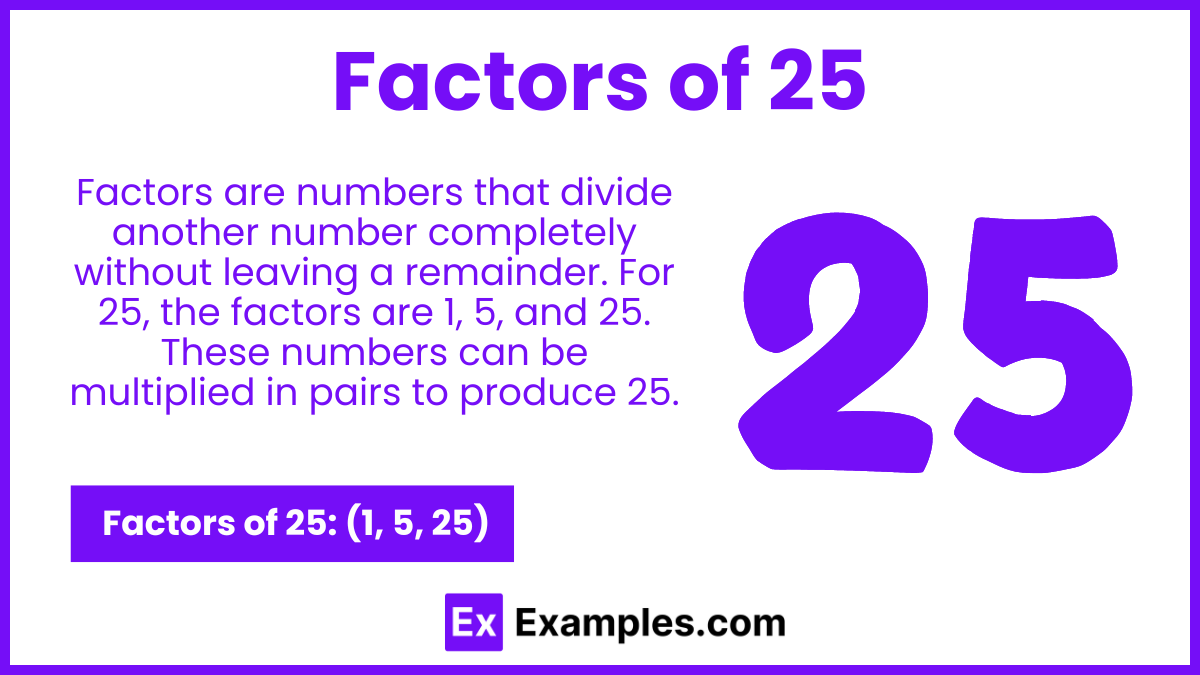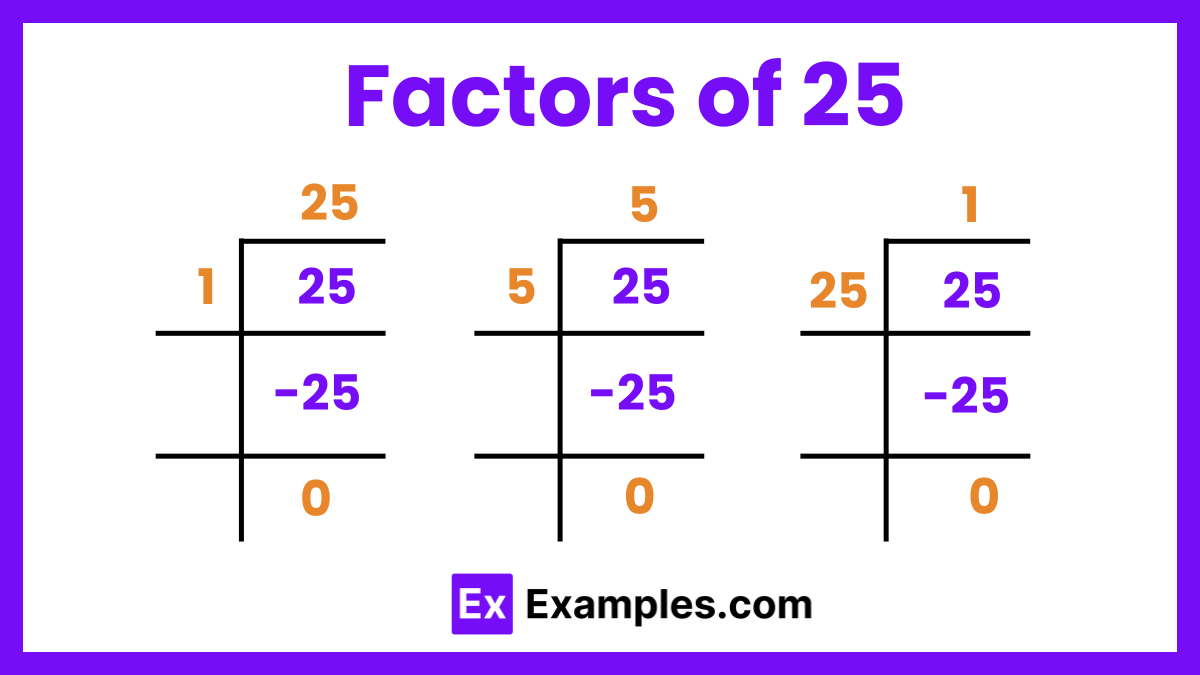What are the factors of 25?
1, 2, 5, 25
1, 5, 25
1, 3, 25
1, 2, 10, 25

The factors of 25 is essential for mastering basic arithmetic and number theory. Factors are numbers that divide evenly into another number without leaving a remainder. For 25, these include both positive and negative numbers. As a perfect square, 25 has unique properties and factor pairs. This guide will explore all the factors of 25, how to identify them, and their significance. Whether you’re a student working on math problems or someone interested in numerical properties, knowing the factors of 25 can simplify various calculations and enhance your mathematical understanding. Read on to learn more about the factors of 25.

The factors of 25 are the numbers that divide 25 without leaving a remainder. These factors are 1, 5, and 25. Since 25 is a perfect square, it has a repeated factor of 5, as 5 × 5 equals 25. Additionally, 25 has negative factors: -1, -5, and -25, because the product of two negative factors also gives a positive result. Understanding these factors is crucial for simplifying mathematical expressions and solving equations involving the number 25.
Calculating the prime factors of a number involves breaking it down into its prime components. Prime factors are prime numbers that, when multiplied together, give the original number. Here’s how to determine the prime factors of 25:
The factors of 25 can simplify many mathematical tasks, from basic arithmetic to solving complex problems. Here are some helpful tips for working with the factors of 25:
Yes, 25 is a composite number because it has factors other than 1 and itself, specifically 5.
The prime factorization of 25 is 5², which means 25 can be expressed as 5 × 5.
A12: The sum of all the factors of 25 is 1 + 5 + 25 = 31.
For a number to be divisible by 25, it must end in 00 or 25. This helps in quickly determining if a number is divisible by 25.
Factors of 25 are numbers that divide 25 without leaving a remainder (1, 5, 25). Multiples of 25 are numbers that 25 can divide into without a remainder (25, 50, 75, etc.).
When finding the LCD for fractions with denominators including 25, knowing its factors helps determine the smallest common multiple, facilitating the addition or subtraction of fractions. For example, the LCD of 1/25 and 1/30 is 150.
Text prompt
Add Tone
10 Examples of Public speaking
20 Examples of Gas lighting
What are the factors of 25?
1, 2, 5, 25
1, 5, 25
1, 3, 25
1, 2, 10, 25
Which of the following is a factor of 25?
4
6
5
8
How many factors does 25 have?
2
3
4
5
Which of the following is not a factor of 25?
1
25
10
5
The product of which two factors equals 25?
2 and 10
1 and 25
3 and 8
5 and 5
What is the sum of all factors of 25?
30
31
25
40
Which number is both a factor and a multiple of 25?
10
15
20
25
Which of the following pairs consists of factors of 25?
3 and 8
2 and 12
1 and 25
6 and 4
If you multiply 1 by which number, will you get a factor of 25?
7
8
25
9
How many times does the factor 5 appear in the factorization of 25?
1
2
3
4
Before you leave, take our quick quiz to enhance your learning!

